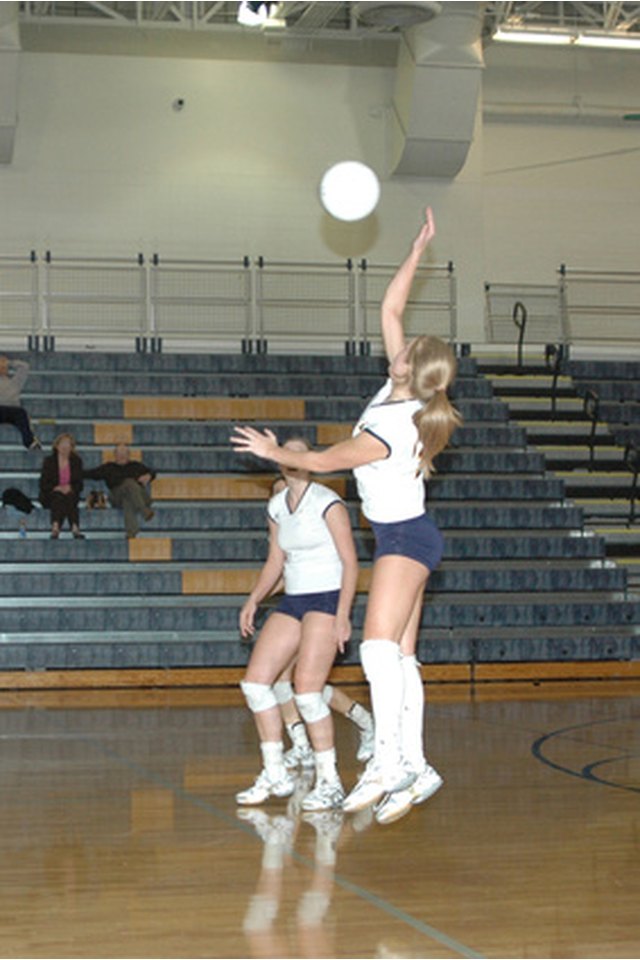Volleyball Spiking Rules

A spike in volleyball occurs when a player is able to hit the ball down to the other side of the court. A successful spike will land on the other side of the court or will deflect off a block into dead territory. Spiking is probably the most dramatic of all volleyball skills. This fast-paced motion has several rules attached to it and isn’t as easy as it looks. Back-row and front-row spikes make the entire court an attack zone.
Front Row
A player who has rotated into the front row can attack any ball but a serve from the other team. A player may also not reach over the net to the other side of the court and attack the ball. She must use the net like a wall and not reach over unless she’s hitting the ball from her side of the court and her hand lands slightly over the other side of the net.
Back Row
A player who has rotated into the back row can attack from behind the 10-foot line. A player attempting a back-row attack can jump from anywhere behind the 10-foot line. A player may not jump from in front of the 10-foot line but may land in front of it after hitting from behind. A player in the libero position may never attack the ball if it’s above the net. This is considered illegal in the sport.
The Net
A player attacking the ball may not touch any part of the net while in motion. If she does touch the net, it’s considered illegal and a referee will give the ball to the other team. The ball may touch the net when the player is hitting it, but any part of her body may not.
Mechanics
A player spiking the ball does so by hitting the ball with an open palm. An attacker may also tip the ball with the tips of her fingers. Under some circumstances, the player might tap it over with a closed fist, which is legal. However, if an attacker performs a “lift,” it’s considered illegal. A lift happens when a player tries to get the ball over by carrying the ball over. This happens when a player touches the ball with an open palm facing upward, then moves her palm to face downward to carry the ball over the net. Referee calls are subjective and sometimes a lift will be called and sometimes it may not.
References
Writer Bio
Christina Martinez has been writing professionally since 2007. She's been published in the California State University at Fullerton newspaper, "The Daily Titan." Her writing has also appeared in "Orange County's Best" magazine. She holds a Bachelor of Arts in communications and print journalism from California State University.
